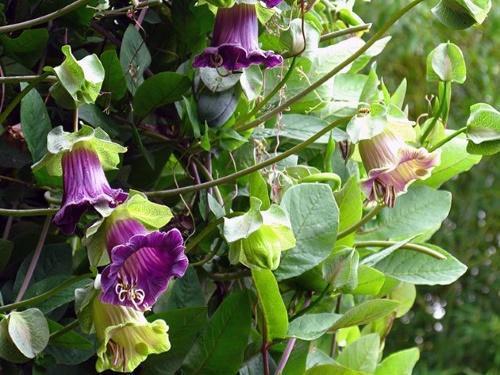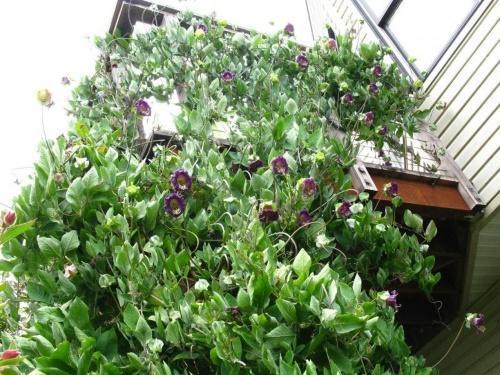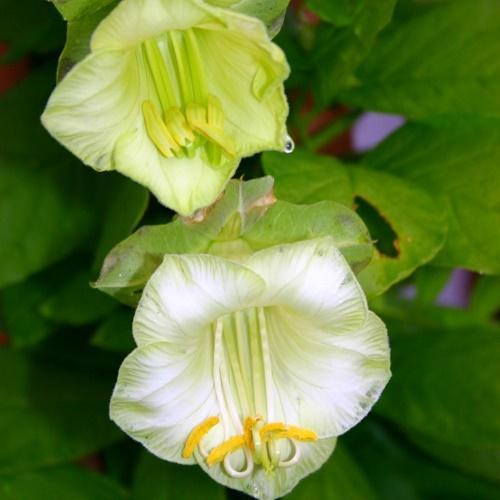Tropical beauty in your garden kobea climbing
 Lovers of lianas will appreciate the wonderful guest from the tropics - the climbing kobei. Amazing large bells with wrapped petals, unpretentious care and rapid growth of the shrub make it one of the most desirable plants in the garden, especially if you need to decorate the area.
Lovers of lianas will appreciate the wonderful guest from the tropics - the climbing kobei. Amazing large bells with wrapped petals, unpretentious care and rapid growth of the shrub make it one of the most desirable plants in the garden, especially if you need to decorate the area.
Kobeya climbing is the most popular type of perennial vinescultivated in the local climate, which is also called the monastery bells.
What does the plant look like?
Climbing kobea is a liana-shaped flowering shrub with long shoots. They can grow up to 7 m in length, while they have tenacious antennae that cling to the slightest support and the branches persistently crawl upward, capturing an ever larger territory. Considering that the kobei grows quickly, the vine will soon form a continuous cover of complex feathery leaves.
The flowering of kobei is very impressive: in July, large, up to 9 cm in diameter, rounded bells appear among the foliage on long pedicels. They can be either single or several on each peduncle. The bell petals are turned outward, and thread-like stamens peep out from the center. At first, the buds are unremarkable, yellow-green and barely visible, but as they bloom, they turn purple or white. At the end of flowering, which lasts until frost, in their place boxes with round seeds are tied. Unfortunately, they do not have time to mature in our country.
Growing features
The homeland of the kobei is Africa, which leaves an imprint on the nature of the flower and its cultivation: in our area it is cultivated as an annual, annually renewing the planting by seed method, since the bush in the open field does not withstand the Russian winter.
For a kobei, you need to take a sunny place where it can open up as much as possible during flowering. It is planted only in seedlings - seeds sown in open ground take a long time to germinate, or even may not hatch at all, besides, flowering will be late and short.
Seeds are germinated before sowing and sown in pots at the end of February. The grown seedlings are planted in open ground at the end of May, when the frosts finally go away.
Caring for a kobe is not complicated and consists in the following procedures:
- frequent watering;
- nitrogen fertilization at the beginning of the season, and potassium-phosphorus - during the laying of buds;
- weed removal.
Many gardeners in the fall dig up the vine, cutting off the aboveground part, and bring it into the room for wintering, and in the spring they return it back to the flower bed to admire its flowering again.